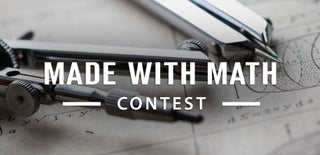Introduction: Guess My Number
This is a simple number guessing game.
Ask your friend to think of a number (1-15) - don't tell
Show them 4 lists of numbers asking them to say yes or no if the number is on the list.
Tell them the number they were thinking of.
Easy.
Supplies
- Pencil
- Paper
- Scissors
- A friend
Step 1: The Lists of Numbers and Guesing
Building the game:
- Cut a piece of paper into 4 strips. (Leave enough room to write 8 numbers).
- Write the following lists, one on each strip of paper
| List A: | 1, 3, 5, 7, 9, 11, 13, 15 |
| List B: | 2, 3, 6, 7, 10, 11, 14, 15 |
| List C: | 4, 5, 6, 7,12, 13, 14, 15 |
| List D: | 8, 9, 10, 11, 12, 13, 14, 15 |
Playing the game:
- Tell your fried to guess a number: (1-15) (don't tell).
- Show them each strip one and a time and ask if the number is on that strip.
- Every time they say "Yes" add the first number in the list to a total.
- After all lists have been reviewed, tell them the total of the first numbers of all the lists their number appeared in.
Example Game:
My number is 12.
I say "No" to List A
I say "No" to List B
I say "Yes" to List C (4 is first number)
I say "Yes" to List D (8 is first number)
4+8 =12 so my friend tells me 12 is my number.
Step 2: Why This Works
Although its not requires to understand this to use the lists:
Its simply Binary or Base2. As you may be aware binary is a list of 1s and 0s.
If we look at our numbers 1-15 and the binary number for the same value.
Decimal : Binary lists DCBA 1 = 0001 2 = 0010 3 = 0011 4 = 0100 5 = 0101 6 = 0110 7 = 0111 8 = 1000 9 = 1001 10 = 1010 11 = 1011 12 = 1100 13 = 1101 14 = 1110 15 = 1111
In binary or base 2 the rightmost number is 1, the next is 2 then 4 followed by 8. Think of the strips of paper as columns to hold numbers down the list. Every row with a 1 in the column would go on that strip. The first list "List A" would hold 1,3,5,7,9,11,13,15 because the right most number is a one. The number 7(111) would be in List A, List B and List C because there are 1's in the first, second and third places. In binary 111 would be in decimal 4+2+1 = 7.
Challenge yourself:
Want to take the numbers higher than 15? Binary number make a pattern, if we added a List E we could go to 31. The first number in List E would be 16. If we added a List F we could go to 63 and the first number in that list would be 32.
Here is a list for 1-31. Try it!!
List A List B List C List D List E 1 2 4 8 16 3 3 5 9 17 5 6 6 10 18 7 7 7 11 19 9 10 12 12 20 11 11 13 13 21 13 14 14 14 22 15 15 15 15 23 17 18 20 24 24 19 19 21 25 25 21 22 22 26 26 23 23 23 27 27 25 26 28 28 28 27 27 29 29 29 29 30 30 30 30 31 31 31 31 31
There are 10 types of people, those who understand binary and those that do not!
If you like this Instructable please Vote for it!!

Participated in the
Made with Math Contest











